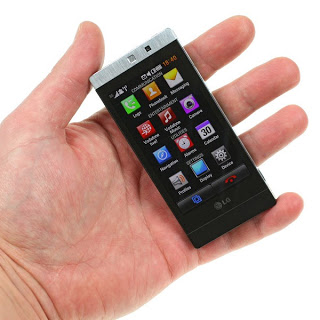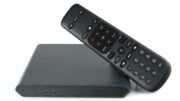We’re at an interesting place in entertainment right now. You can go into a discount store and pick up a television that’s larger than you ever thought you’d own, for less than you would have paid for a modest TV 25 years ago. Yet, the big action is on screens smaller than 12″. Think about it… the very first TVs had 12″ screens and for all of the 20th century and the first decade of the 21st, the dream was larger, larger, larger. Now all of a sudden we’re back to 12″ again. The difference, of course, isn’t the screen but what surrounds it; a 12″ TV in the 1950s could have a cabinet the size of a washing machine, while today’s small screens fit in a pocket or purse.
The real argument isn’t actually screen size but personal viewing. On the one side are the baby boomers, who think of TV as an appointment activity. You go to a specific place to do it, at a specific time. Sure, the DVR has softened their hearts but really the way they want to watch TV is in the living room or bedroom, and really that’s about it. You watch TV as a communal activity with a spouse or friend, and it’s something you share with each other.
On the other side are the millennials, who want to “consume video” anywhere and everywhere. They don’t care what time or place it is, and while they still share their opinions (Oh! Do They!) it’s on social media, where conversations can take days or weeks or may have no real connection to time at all. For these folks, it seems rather a waste of time to go to a specific room where the entertainment is.
And of course, as always in the middle is Generation X, the group too small to matter to marketers.
In order to watch TV like a boomer, you need a big screen that everyone can share, and because it’s an activity that you’ve stopped your life for, you want a comfortable experience. In order to consume video like a millennial, you need something small enough to carry around you certainly do not care if anyone else is watching at the same time. If they are, they probably have their own screen. The small screen may not be comfortable, but it’s portable and available, something that the big screen isn’t.
Who wins? If you accept that given enough time, younger people always beat older people, the makers of big TVs had better start thinking of other things to do with their production lines. This is especially true if someone comes up with a projector or VR headset or something that can simulate the large-screen viewing experience in a portable form factor. It could be that in 20 years large video screens won’t be seen outside of bars, restaurants and other gathering places, and that TV on the network’s schedule will be a distant memory. But then, potentially something funny could happen. Just like the resurgence in vinyl records recently, millennials (who by then will be 35-55 years old) might discover the quiet joy of immersing yourself in a large image with a group of people, sitting silently and letting the experience take you where it will. You never really know.
Oh, you might be wondering where I stand with all this? I watch about 85% of my video entertainment on a TV. I only use something smaller when I have to.





